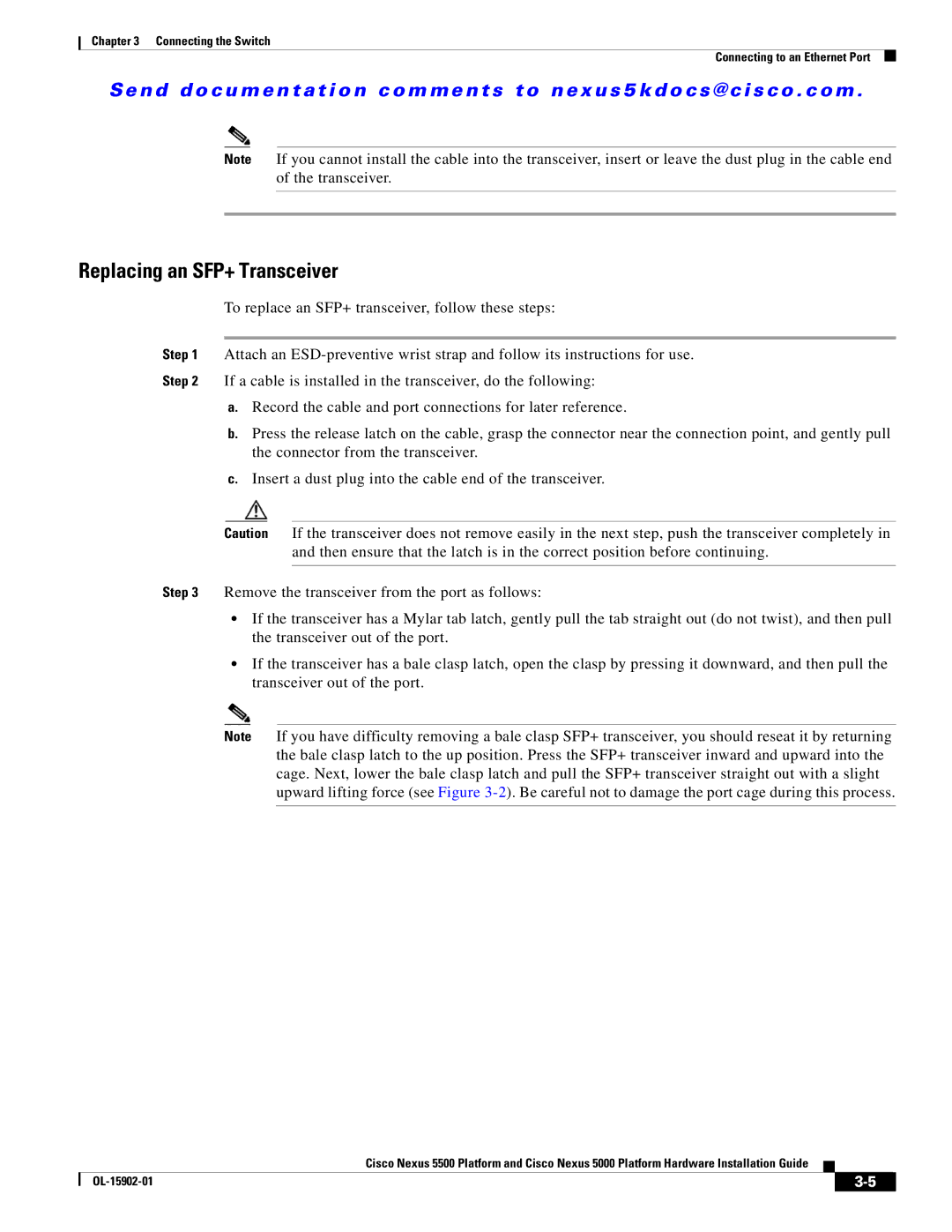
Chapter 3 Connecting the Switch
Connecting to an Ethernet Port
Se n d d o c u m e n t a t i o n c o m m e n t s t o n ex u s 5 k d o c s @ c i s c o . c o m .
Note If you cannot install the cable into the transceiver, insert or leave the dust plug in the cable end of the transceiver.
Replacing an SFP+ Transceiver
To replace an SFP+ transceiver, follow these steps:
Step 1 Attach an
Step 2 If a cable is installed in the transceiver, do the following:
a.Record the cable and port connections for later reference.
b.Press the release latch on the cable, grasp the connector near the connection point, and gently pull the connector from the transceiver.
c.Insert a dust plug into the cable end of the transceiver.
Caution If the transceiver does not remove easily in the next step, push the transceiver completely in and then ensure that the latch is in the correct position before continuing.
Step 3 Remove the transceiver from the port as follows:
•If the transceiver has a Mylar tab latch, gently pull the tab straight out (do not twist), and then pull the transceiver out of the port.
•If the transceiver has a bale clasp latch, open the clasp by pressing it downward, and then pull the transceiver out of the port.
Note If you have difficulty removing a bale clasp SFP+ transceiver, you should reseat it by returning the bale clasp latch to the up position. Press the SFP+ transceiver inward and upward into the cage. Next, lower the bale clasp latch and pull the SFP+ transceiver straight out with a slight upward lifting force (see Figure
Cisco Nexus 5500 Platform and Cisco Nexus 5000 Platform Hardware Installation Guide
|
| ||
|
|
